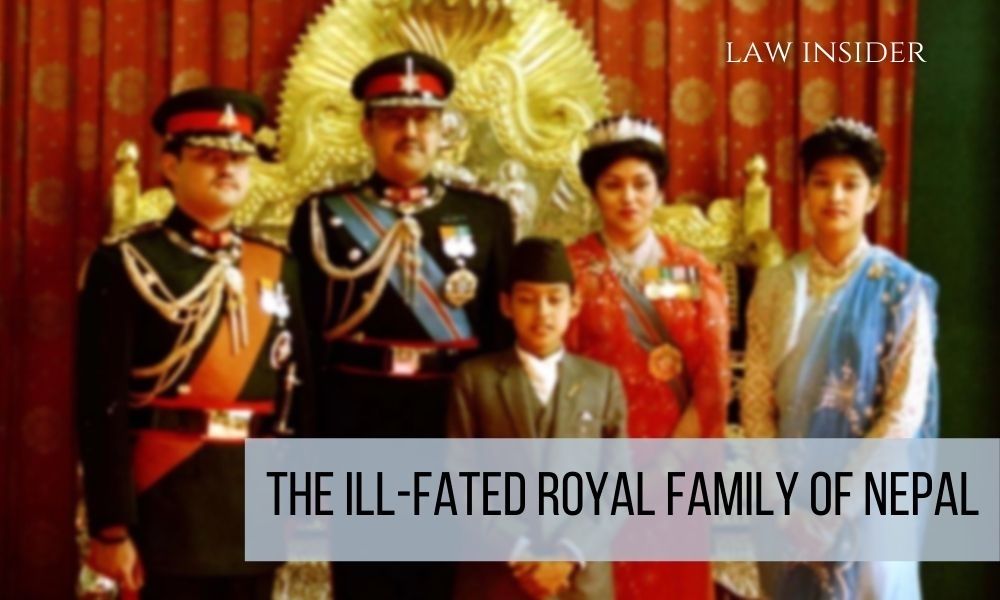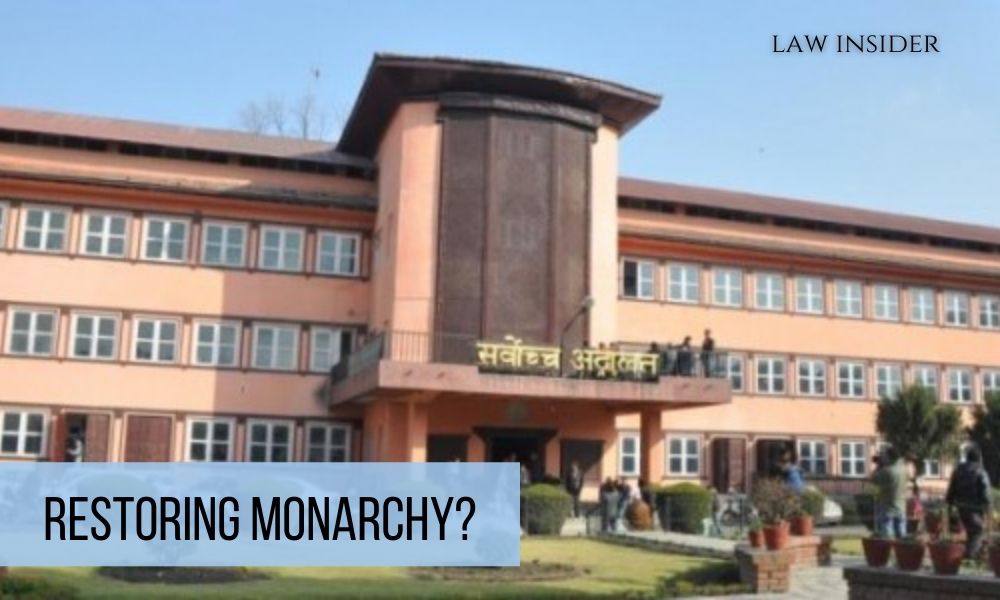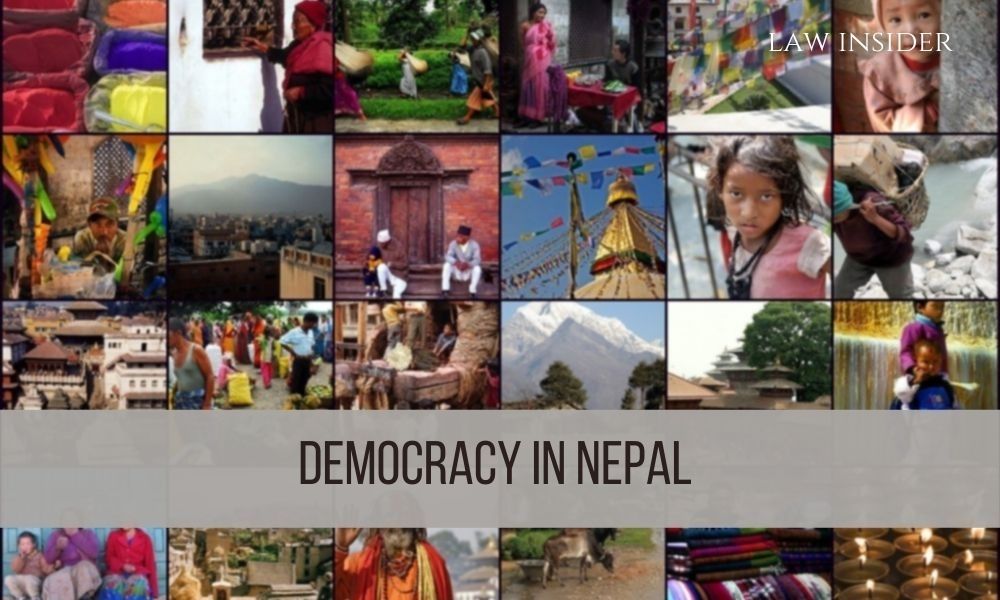Published on: August 27, 2021 11:28 IST
Introduction
The democracy of Nepal has been in crisis for a long time. If we look at the past, democracy has suffered a lot. The same picture is repeating again.
Recently, the President of Nepal, Bidya Devi Bhandari, on 22 May on the advice of Prime Minister K.P. Sharma Oli by the power vested in her under Article 76(7) of the Nepali Constitution dissolved the House of Representatives (Lok Sabha) of Nepali Parliament and announced fresh elections. This decision was taken as the political parties of Nepal failed to form a new Government.
This is the second time that the house has been dissolved in five months. Earlier, the house was dissolved in December. However, the Supreme Court reinstated the House after hearing multiple writ petitions.
Thus, this article deals with how the democracy of Nepal has been tossed and how the judiciary has played important role in saving it.
What democracy challenges were faced by Nepal?
Nepali democracy has experienced many trials since its inception. Some seventy years ago, Nepal ended its 104-old Rana rule. Hence, democracy was introduced for the first time in Nepal. However, the country was accustomed to autocracy and had no roots of democracy in it. Therefore, it was a herculean task to establish democracy.
Nepal took steps and established democracy, but it was very clumsy. It saw five different governments until 1959. But one year later, in 1960, King Mahendra staged a coup, banned all political parties, and established his rule as a real source of authority.
After 30 long years i.e., in 1990 democracy was again established in Nepal. Mahendra died in 1972 and his son Birendra succeed the throne. Many political problems started cropping up and hence, a multiparty system with constitutional monarchy was adopted by Nepal. A new constitution was also written in 1990.
Further, in 2001 the king and his family were killed in a royal massacre. The new king, Birendra’s brother Gyanendra defended the monarchy. In 2005 parliament was reinstated in Nepal.
In 2015 a Constituent Assembly created a new Constitution. It established Nepal as a secular, federal, republic country. However, after the promulgation of the Constitution, many minority groups revolted and claimed that their rights were not adequately protected.
But after five years democracy was again under threat because of K.P Sharma Oli who dissolved the House of Representatives two times. However, the Supreme Court intervened and challenged Oli’s decision of dissolving the House. The Court held that it is unconstitutional to dissolve the House and the current Constitution does not allow one to dissolve it.

Why is democracy in crisis now?
In the year 2017, ahead of general elections that year, the Maoist party and the United Marxist Leninist (UML) decided to campaign together which ultimately led to the merger of both as the NCP i.e., the Nepal Communist Party. The Maoist party was headed by Pushpa Kamal Dahal, known as Prachanda, and UML Party headed by K.P. Sharma Oli.
In the 2017 elections, the Nepal Communist Party defeated the Nepali Congress Party. Both the leaders Prachanda and Oli decided to take turns as prime ministers during their five years term. Oli decided to go first.
While being in the power, he tried to take things into his own hands. This increased concern among Prachanda and other party leaders. Prachanda had criticized Oli for failing to run the Government and the party properly. He had also accused him of corruption.
Problems started cropping up between Prachanda and Oli when the latter issued two controversial ordinances in the year 2020. The differences were resolved by the Chinese ambassador to Nepal who mediated in the differences.
However, the dispute worsened instead of getting resolved. The Nepal Communist Party from Prachanda’s camp decided to hold an emergency session of Parliament with a view to holding no confidence against Oli.
However, Oli announced that he was going to dissolve the Parliament and the fresh elections would be held in April and May. Many political leaders and former prime ministers declared this move unconstitutional. One such former Prime Minister Madhav Kumar Nepal termed the move unconstitutional.[i] Nepali Congress president and former prime minister Sher Bahadur Deuba also commented on the Oli’s government for its “attempt to impose one-party totalitarian rule in the country”. [ii]
As a consequence of this, both the parties got divided into two and there remains a battle as to who will inherit the name of the party.
What was Supreme Court’s take on it?
Due to the increasing political crisis, it was necessary for the Supreme Court to step in and interfere in the matter. A five-member constitutional bench was set up. The Court through its Chief Justice Cholendra Shumsher JBR observed that though the issue is political in nature the Court had to deal with it in the interest of upholding the Nepal Constitution.
The Supreme Court of Nepal reinstated the lower house or the House of Representatives of Parliament. The Court held that the move of dissolving the house is against the Constitution. It is unconstitutional. The Court in response to 13 writ petitions ordered the 275 members house to be reinstated and convened within 13 days.
Further, for the second time the Prime Minister K.P Sharma Oli had announced dissolving the House of Representatives. However, once again his decision was overturned by the Supreme Court of Nepal. The Court issued a judicial writ to appoint Nepali Congress leader Sher Bahadur Deuba as the Prime Minister of Nepal as per the Nepali Constitution Article 76(5). It was the second time the Supreme Court had interfered and reinstated the House.
However, due to some problems, both K.P Sharma Oli and Sher Bahadur Deuba were not in a position to be appointed as Prime Ministers. Hence, Nepal’s President Bidya Devi Bhandari has dissolved the Parliament for the second time in less than six months and announced elections in November 2021.

Why are Nepali citizens demanding monarchy?
Many people from Nepal including the Royalist groups and pro-monarchy citizens, under the leadership of Nepal’s right-wing Rastriya Prajatantra Party, had held protests and called for the restoration of the monarchy. Some leaders of the Nepali Congress are also supporting the establishment of the monarchy.
As we have seen above that previously Nepal was governed by the monarchs for a long time. It was in 2008 that the monarchy was abolished. However, a small chunk of the population still favors establishing a monarchy in Nepal.
Pro-monarchy protests have taken place for a long time. Nevertheless, such protests were also found in June on a small scale and a huge wave in December of 2020.
The main reasons for the demand for monarchy were the failure of the Nepal Communist Party in handling the COVID-19 situation. Another reason was the never-ending political crisis in Nepal related to democracy.
Many right-winged people believed in the monarchy and hence suggested implementing the same. Earlier, during the monarchy, Nepal was a Hindu State. But, after the implementation of the Constitution, it was declared a secular state. Hence, the Nepali citizens want to make Nepal a Hindu state again. Another reason for this demand is the increasing corruption by the political leaders and feuds between themselves.
Thus, these are some of the problems due to which people in Nepal are asking to restore the monarchy. However, the return of the monarchy and Hindu State will pose danger to the democracy of Nepal. It would mean the death of democracy. Hence, it is very unlikely that the monarchy will be established.
Conclusion
From the above discussion, we can conclude that the democracy in Nepal is stuck in crisis. As we have seen above, it is not the first time it is undergoing a crisis. Many such problems have taken place before.
Nepal was struck in political instability soon after the democracy was restored. If we look in the past one may find that after 1990, not a single government has completed its five-years tenure. 26 governments have been formed in the last three decades.
Earlier, it was having a monarchy and then democracy was established after so many efforts. However, if we look now, it has failed significantly. Abraham Lincoln has said that democracy is the government of the people, by the people and for the people. But the scenario is quite opposite nowadays. The political leaders are taking powers into their own hands letting the common man suffer alone.
Due to the political instability and some other reasons, the people from Nepal are asking for restoring the monarchy. Hence, the time has come to look at the needs of people rather than thinking for their own benefits and provide a much better democracy and government for the people.
References
[i] PTI, Nepal PM Oli dissolves Parliament amid power tussle, opposition cries foul, “The Outlook”, available at: theoutlook.com (last visited on 25 August 2021)
[ii] PTI, Nepal PM Oli dissolves Parliament amid power tussle, opposition cries foul, “The Outlook”, available at: theoutlookindia.com (last visited on 25 August 2021)

